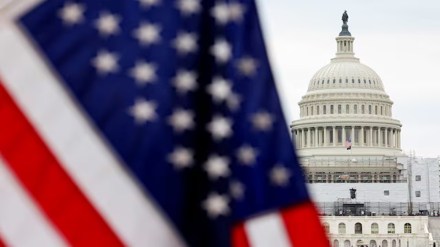While many predicted a Black Monday on April 7, with markets plummeting, the day finished on a more upbeat note. On Monday, the Dow and S&P 500 fell for the third time in a row, losing 0.91% and 0.23%, respectively. The Nasdaq Composite, on the other hand, increased 0.1% as investors purchased undervalued shares of big technology names such as Nvidia (3.5%), Amazon (2.5%), Meta (2.3%), Palantir (5.2%), and Broadcom (5.4%).
All three indices began the day sharply lower, with the Dow falling as much as 1,700 points after considerably bigger losses elsewhere in the world. However, it unexpectedly rose to about 900 points and the S&P 500 recovered from a 4.7 percent loss to a 3.4 percent gain, its largest increase in years.
The sharp spike followed a fake rumor that Trump was mulling a 90-day tariff truce, which a White House account on X swiftly dismissed as “fake news.” The fact that a rumor can shift trillions of dollars in investments demonstrates how eager investors are for signals that Trump may ease tariffs.
Even the US equity futures are green on Tuesday. So, is the selling pressure over, and are the bulls back in control?
It could be too early to suggest any of those things. The impact of tariffs, which from April 9 will be implemented in full, is yet to be seen.
Monday’s recovery could have been based on the market sentiments when it comes to negotiations between Trump and other countries. Market hopes remain that negotiations may come. Meanwhile, Treasury Secretary Scott Bessent revealed that nearly 70 countries, including Japan, have reached out to the administration to discuss tariff negotiations.
The uncertainty around tariffs still rule the markets. The most recent threat from Trump is to impose 50% duties on China if it continues its retaliatory actions against the US.
Looking ahead, investor focus shifts to key inflation data due later this week, which could influence expectations around the Federal Reserve’s next move on monetary policy.
Gold At $3,000
Gold price is back above $3,000 while Silver is showing higher demand trading at $30. The gold-silver ratio stands at 100:1 which shows silver is still undervalued. Since last week, gold has been under pressure in the international markets.
Dr. Renisha Chainani, Head – Research at Augmont, shares why gold has seen a drop in prices and the outlook ahead:
With tariffs exceeding forecasts and little indication of discussions, markets are rapidly pricing in the prospect of a worldwide recession, beginning with the United States. The risk-off mood has resulted in widespread liquidation across asset classes. Traditional safe havens like gold have not been spared.
Despite the short-term fear, the medium- to long-term outlook for gold remains favourable. The current climate, which is characterized by volatility, economic uncertainty, and central bank buying, tends to favour gold.
Fed Chair Jerome Powell repeated the Fed’s “wait-and-see” approach to the emerging volatility last week. The announcement of the March CPI this week will be key. If inflation data continues to soften, it may bolster the case for further rate reduction, thus reigniting demand for gold.
